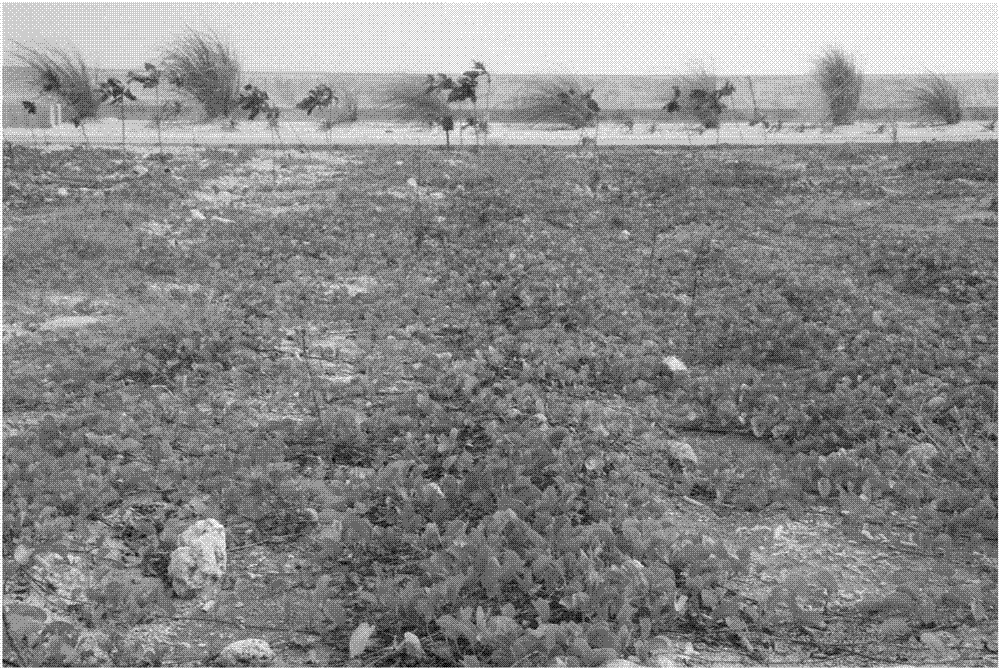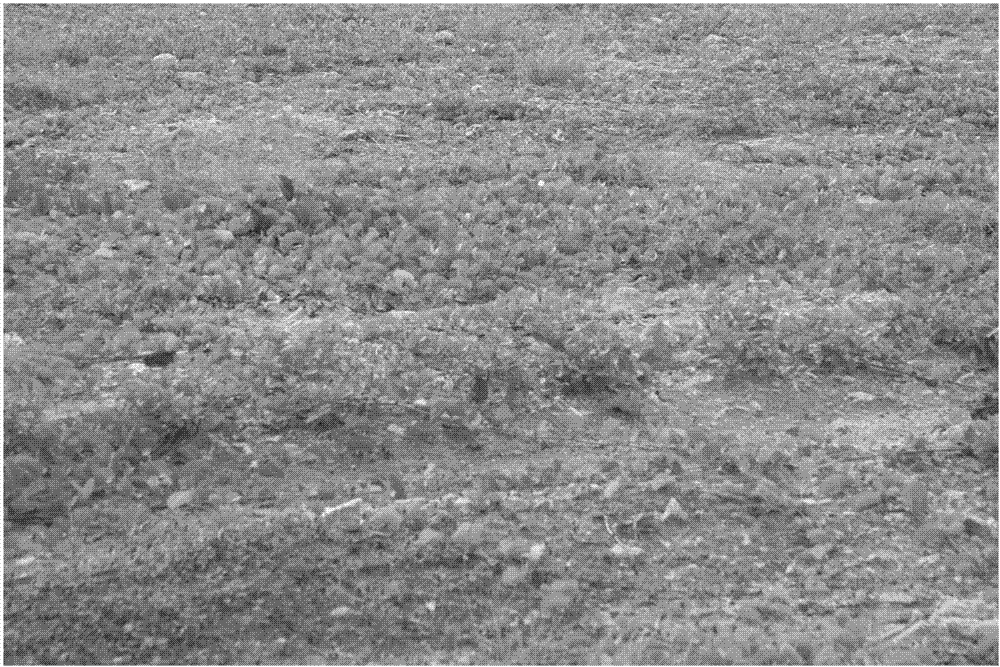Method for building near-natural vegetation on tropical coral reef
A technology of natural vegetation and coral, applied in the field of building near-natural vegetation on tropical coral reefs, can solve the problems such as greening of coral reefs that have not been used, and achieve the effect of low maintenance cost, good effect and high survival rate
- Summary
- Abstract
- Description
- Claims
- Application Information
AI Technical Summary
Problems solved by technology
Method used
Image
Examples
Embodiment 1
[0033] Location: On a coral reef in Hainan Province:
[0034] 1. Plant species: Scaevola sericea, Ipomoea pescaprae and Phyla nodiflora.
[0035] 2. Planting space: plant 2 rows of thick vines at the seaside first, and then plant Pittonia chinensis inward, and plant thick vines around Pittonia cassia, and embellish them with river vines.
[0036] 3. Digging holes and putting base fertilizer: The planting method of plants is to dig planting holes first. The planting holes are conical, the diameter of the conical surface is 30cm, the height is 30cm, and the distance between seedlings is about 30cm×30cm. (The amount is 2 / 3 of the volume of the nutrient bag of the planted seedlings in the bag, and the mass ratio of the farm base manure to coconut bran is 1:1), and then put 5g / plant of water-retaining agent.
[0037] 4. Planting and fertilization: Soak the plant bag seedlings in water (bubbles, no water can be pinched by hand), cut the bag with scissors, put the plant bag seedling...
Embodiment 2
[0039] Example 2: Pittosporum pratense, Achilles vine and Hyena thorn
[0040] The difference from Example 1 is that the vine vine is replaced by thorns. In this embodiment, the combination of 1 shrub, 1 grass and 1 vine is adopted. There are few species, the landscape is slightly monotonous, most of them can survive, and the vegetation coverage rate is not high enough.
Embodiment 3
[0041] Embodiment 3: Pittosporum pratense, Prattonia chinensis and vine
[0042] The difference from Example 1 is that the thick vine is replaced by sea bean. In this embodiment, the combination of 1 shrub, 1 grass and 1 vine is adopted. There are few species, the landscape is slightly monotonous, most of them can survive, and the vegetation coverage rate is not high enough.
PUM
 Login to View More
Login to View More Abstract
Description
Claims
Application Information
 Login to View More
Login to View More - R&D
- Intellectual Property
- Life Sciences
- Materials
- Tech Scout
- Unparalleled Data Quality
- Higher Quality Content
- 60% Fewer Hallucinations
Browse by: Latest US Patents, China's latest patents, Technical Efficacy Thesaurus, Application Domain, Technology Topic, Popular Technical Reports.
© 2025 PatSnap. All rights reserved.Legal|Privacy policy|Modern Slavery Act Transparency Statement|Sitemap|About US| Contact US: help@patsnap.com



